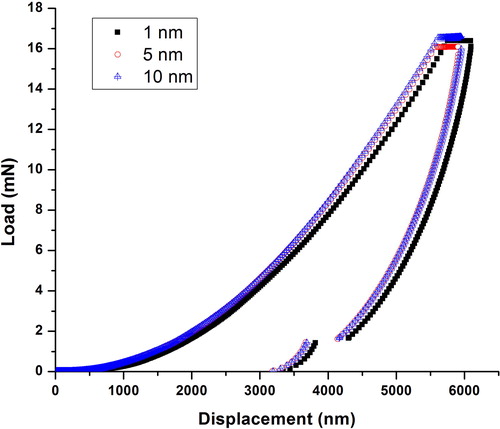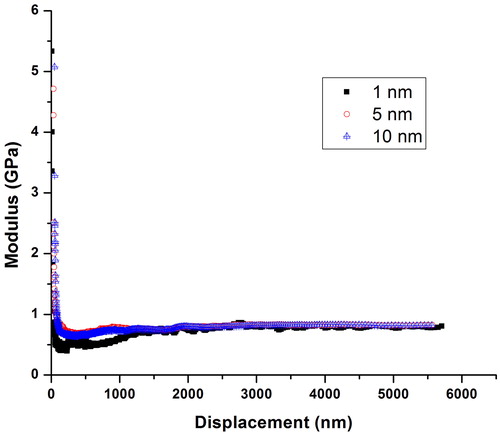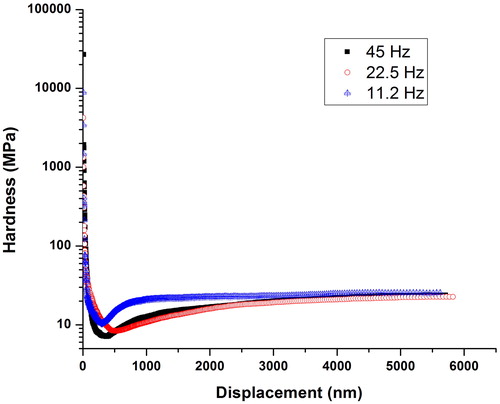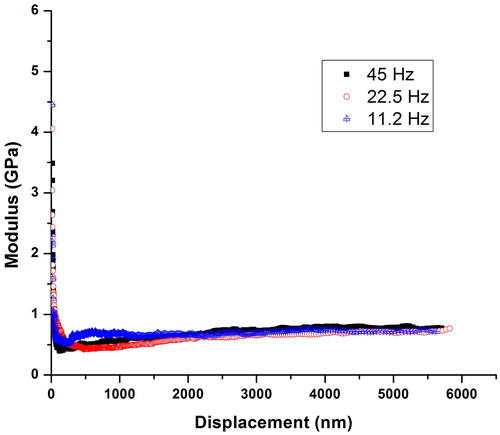Figures & data
Figure 4. Indentation Load as a function of displacement for different frequencies (11.2, 22.5, 45 Hz).
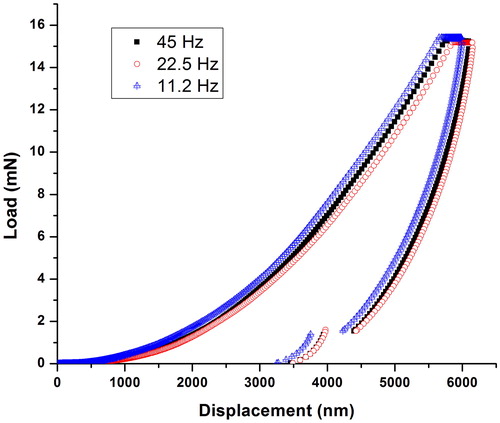
Figure 7. Indentation load as a function of displacement for different strain rates (0.02, 0.05, 0.1, 0.2, 1 s−1).
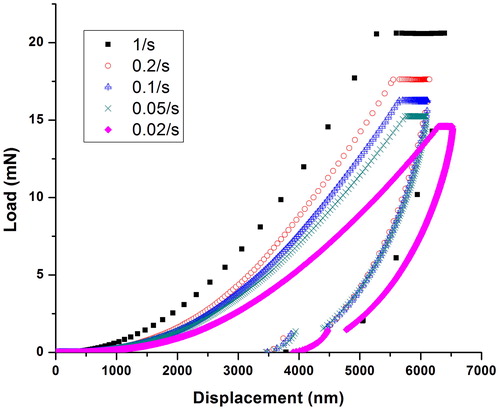
Figure 8. Creep displacement as a function of strain rate at a constant frequency of 45 Hz and an amplitude of 2 nm.
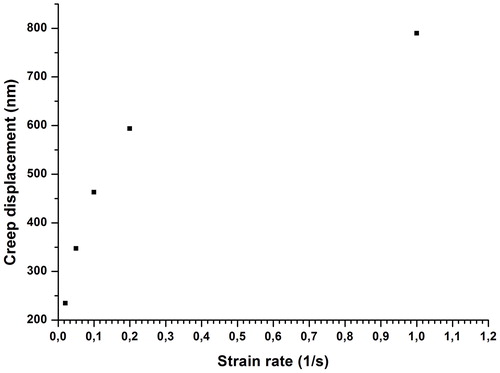
Figure 9. Hardness as a function of displacement for different strain rates (0.02, 0.05, 0.1, 0.2, 1 s−1).
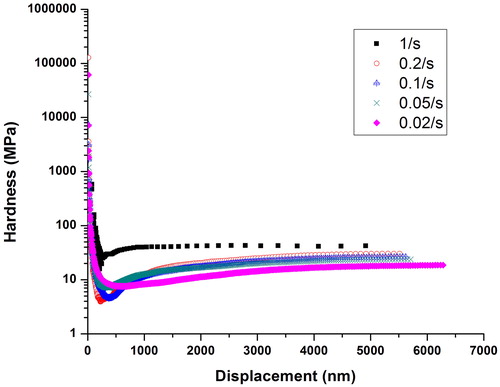
Figure 10. Modulus as a function of displacement for different strain rates (0.02, 0.05, 0.1, 0.2, 1 s−1).
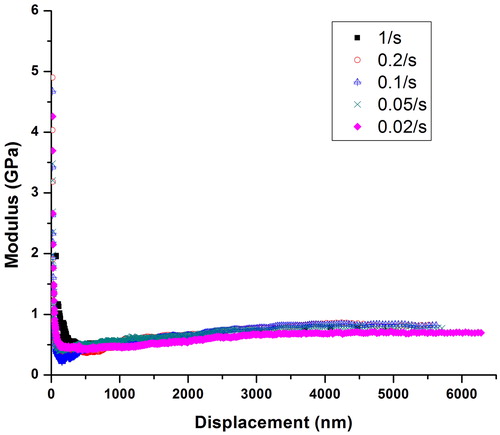
Figure 11. Indentation load as a function of displacement by having peak load of 10 mN for different holding times (1, 3, 5, 10, 20, 50, 100 sec).
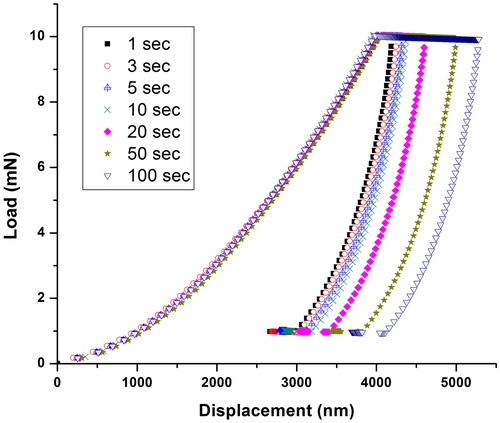
Figure 12. Indentation load as a function of displacement by having peak load of 30 mN for different holding times (1, 3, 5, 10, 20, 50, 100 sec).
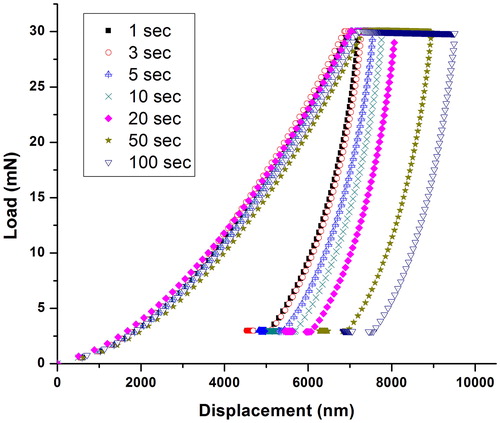
Figure 13. Indentation load as a function of displacement by having peak load of 100 mN for different holding times (1, 3, 5, 10, 20, 50, 100 sec).
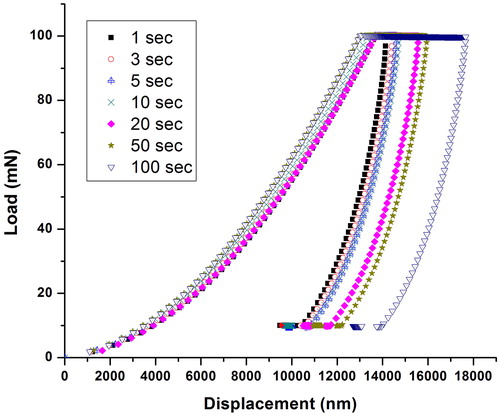
Figure 14. Creep displacement as a function of holding time for different peak loads (10, 30, 100 mN). The solid line represents model fitting.

Table 1. Values of fitting parameters for EquationEq. [1][1]
[1] .
Figure 15. Hardness as a function of holding time for different peak loads (10, 30, 100 mN). Bars represent standard deviation.
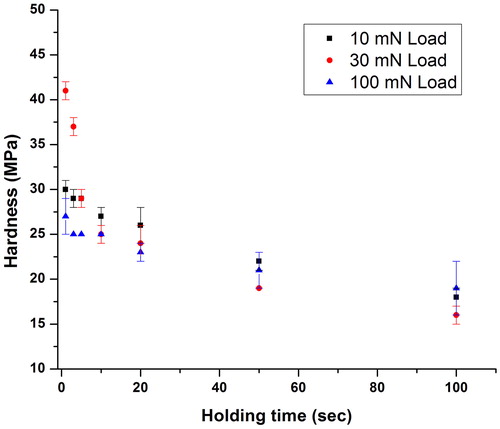
Figure 16. Modulus as a function of holding time for different peak loads (10, 30, 100 mN). Bars represent standard deviation.
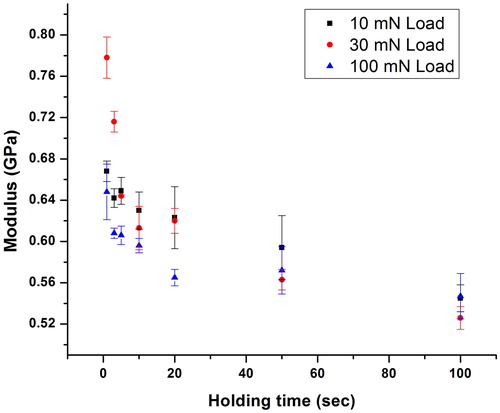
Table 2. Recommended holding times for LDPE with different peak loads.

